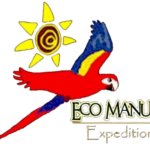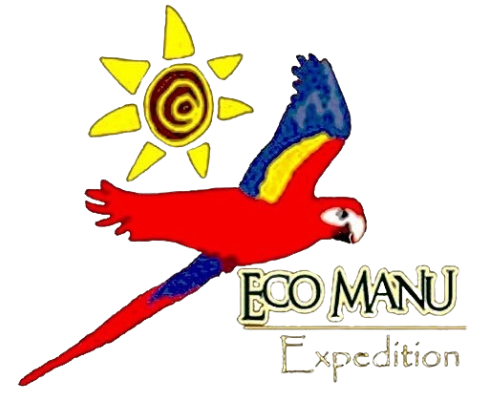
Health and climates of Peru
For the safety of our travelers we recommend obtaining travel medical insurance and consult your doctor about necessary immunizations such as polio, tetanus, typhoid and hepatitis. In most Peruvian cities and tourist places there are private clinics that accept international insurance and most of the doctors speak intermediate English with which you can communicate perfectly.
Travelers traveling to the Peruvian Amazon: Manu Biosphere Reserve and National Park, Tambopata Reserve in Puerto Maldonado and Iquitos, northern Peru. Malaria medication should be considered (in most cases it is not necessary especially in Manu). Yellow fever vaccine is mandatory and we recommend carrying a good insect repellent with a minimum percentage of 15% deet.
The Peruvian Amazon or Amazon jungle is a magical, paradisiacal and enchanting place. It has a humid tropical climate, a lot of heat, exuberant vegetation and a lot of exotic life. 400 – 200 meters above sea level.
Lima, Ica, Nazca, Paracas, Trujillo and the entire coast of Peru are at sea level, with a hot climate from December to April summer season and all of northern Peru is known as the eternal summer.
Arequipa is located between the coast and the highlands, at 2,335 meters above sea level. Arequipa is a beautiful city with a nice temperate climate and warm all year round.
Cusco is the Inca city and is located in the Andes of Peru at 3,300 meters above sea level. Cusco has a moderate to cold climate. It is recommended to bring a good jacket or fleece for the cold and if you are interested in hiking or tracking in the mountains. We recommend that you train a little or at least like to walk and enjoy the high altitude trails, that cool and cold wind is unique to the Inca land. Travelers with heart problems and high blood pressure should consult their doctors before traveling to the mountains.
Puno and Lake Titicaca are located at 3,827 m.a.s.l. Ayacucho is located at 3,335 – 3,630 meters above sea level. We recommend travelers to take a leisurely trip to these wonderful cultural and folkloric regions of the Peruvian Andes.
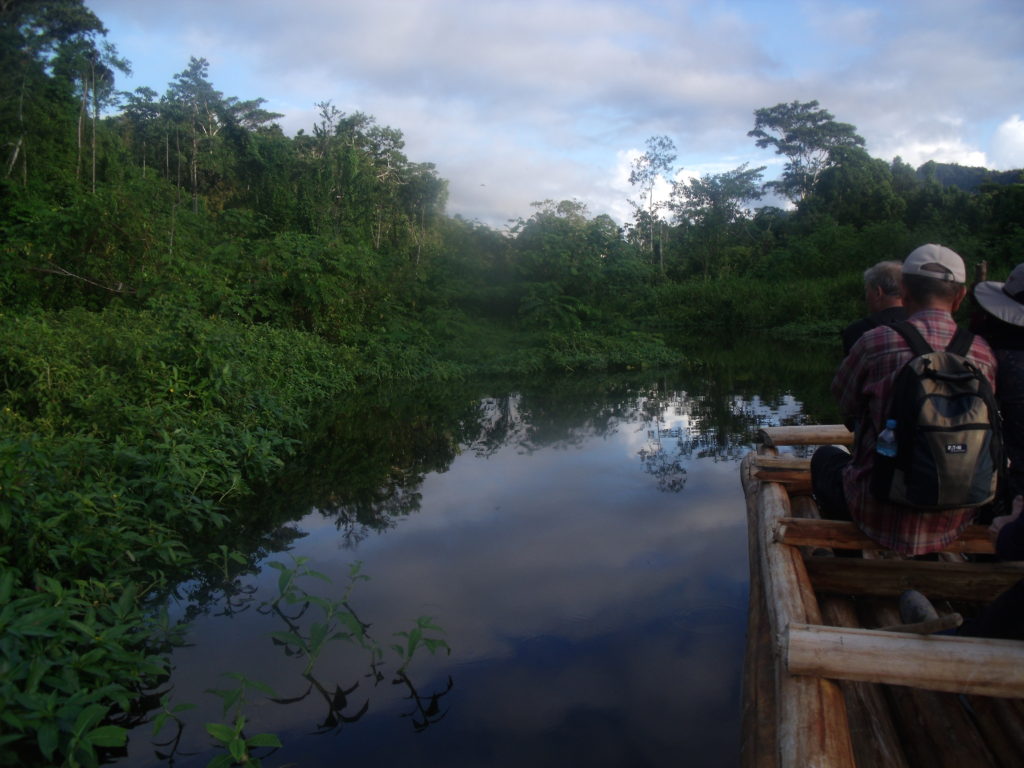
Manu National Park location
Manu National Park is a mega-diverse protected natural area in southeastern Peru, located in the departments of Cusco and Madre de Dios, between the provinces of Manu and Paucartambo. With an area of 1,909,806 hectares, the park was created on May 29, 1973 and in 1977 UNESCO recognized the park as a Biosphere Reserve and Natural and Cultural Heritage of Humanity.
It extends from 300 meters above sea level, at the confluence of the Manu River with the Madre de Dios River, to more than 4000 meters above sea level at the summit of the Apu Kañajhuay mountain. It is a biological area with different ecological floors very special for the sighting of a great diversity of exotic flora and fauna and native populations of the Amazon.
Puna
It is above 2500 to 4000 m.a.s.l., the cold mountains of the Puna show a landscape full of bushes, humid, with the presence of orchids, plants and flowers typical of these heights, a place where Andean foxes, gray deer, pumas, eagles, condors, etc. live.

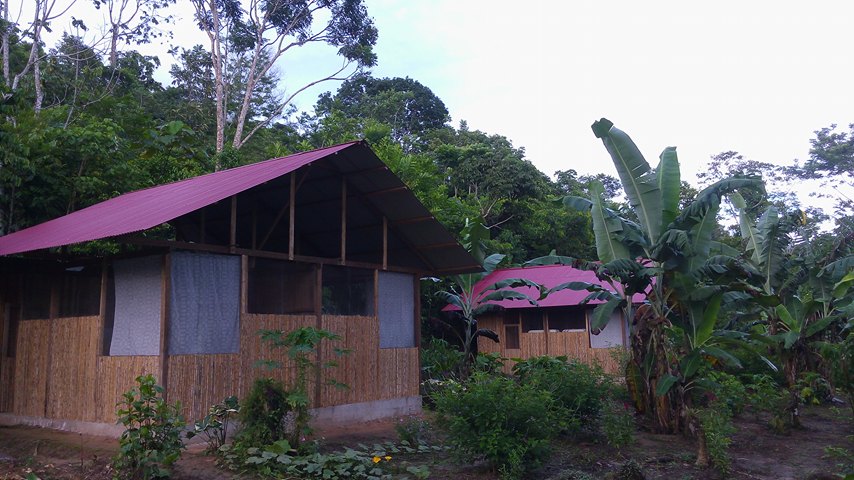
Cloud forest
After the puna the vegetation changes and we enter the cloud forest, from 2500 to 600 m.a.s.l., here we can see dense forests and trees that can measure 15 – 20 meters, with the presence of mosses, lichens, bromeliads and orchids. The variety of fauna increases especially birds, you can see quetzals, toucans and of course the national bird of Peru, the famous “cock of the rock” (Rupicola peruvianus), you can also see woolly monkeys, spectacled bear, skunks and fascinating hummingbirds.
Lowland rainforest or tropical rainforestl
It is below 600 m.a.s.l. the lush jungle forest becomes even denser, giving way to lowland rainforest or tropical rainforest, in the Amazon basin surrounding the Alto Madre de Dios and Manu rivers.
It is a primary tropical forest stopped in time, with trees almost 50 m high and some more than 500 years old. This is the ideal home for more than 1000 species of birds, such as the harpy eagle, parrots, macaws, toucans, etc., and more than 200 species of mammals; home par excellence of different species of monkeys such as the spider monkey, howler, squirrel, capuchin, etc, we also have the presence of anteaters, ocelots, capybaras, tapirs and of course the third largest feline in the world Jaguar (Panthera onca), huge black caimans, white caimans and hundreds of turtles.
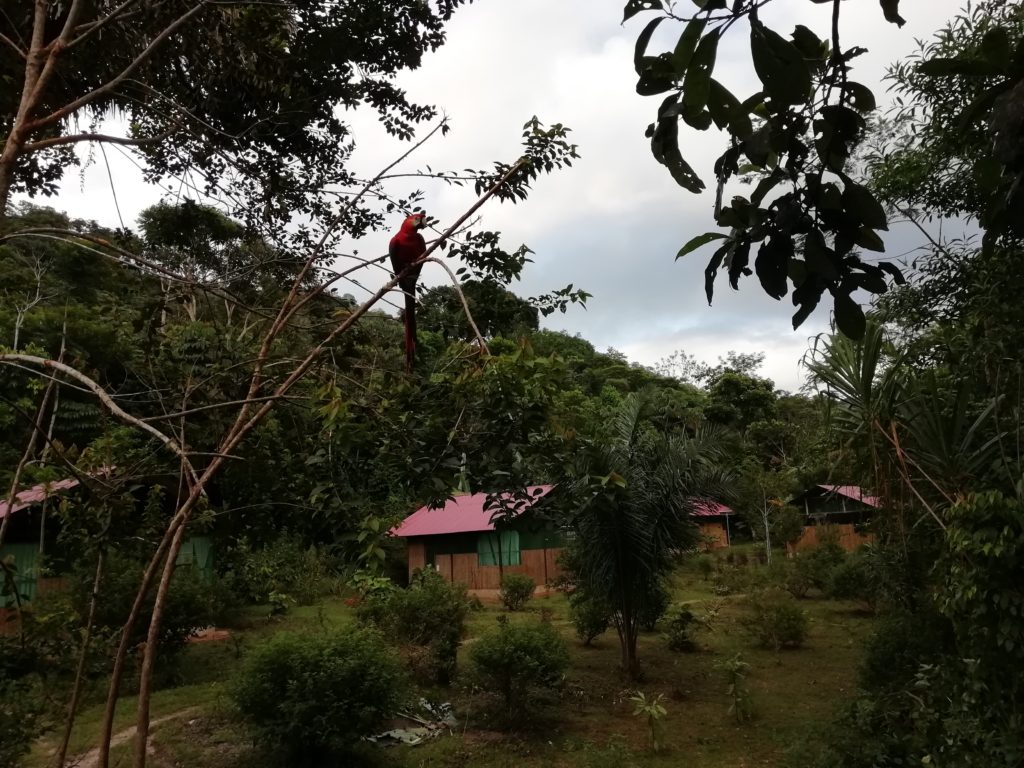
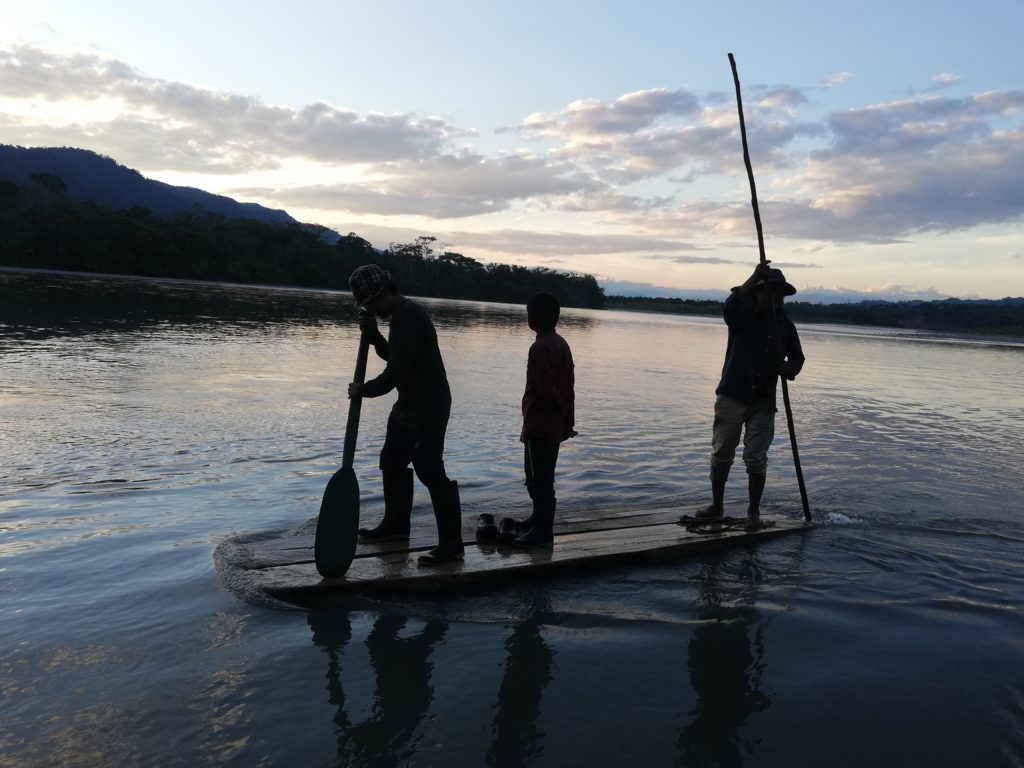
What are the cochas and collpas?
The so-called “cochas” are ancient meanders of the river that were isolated after the change of trajectory of this to the passage of hundreds of years and that today form an inland lake. These territories are very important for the sighting of black caimans and families of giant otters or commonly called river otters. Among the most important ones we have the “Cocha Salvador” and the “Cocha Otorongo”.
The so-called “colpas” are also present in Manu and are also of great importance. They are walls of clayey soil rich in mineral salts, being a very important meeting point for macaws, parrots and small parakeets that eat clay as part of their diet. There are also mammal clay licks, which also bring together larger animals such as tapirs, deer and wild pigs.
In what months is it advisable to travel to the Manu rainforest?
As a travel guide and organizer of all trips in the Amazon, we recommend you to travel from April to January, this is the best time to visit the Amazon.
April to May is the transition of the rainy season, with moderate rainfall usually two hours a day and not every day.
May to October is our dry season, but the Amazon is also known as the “rain forest”, so even in this season we can have some rain, but not as much as in the rainy season.
October to January are the transition months which is the end of the dry season and the beginning of rainy season and there are moderate rains usually it is raining one or two hours at night and not every day.
From the end of January, February and March is really our rainy season until the beginning of April, at this time there are landslides that sometimes block the roads and the rivers in some areas flood. However, there is machinery that clears the roads when necessary.
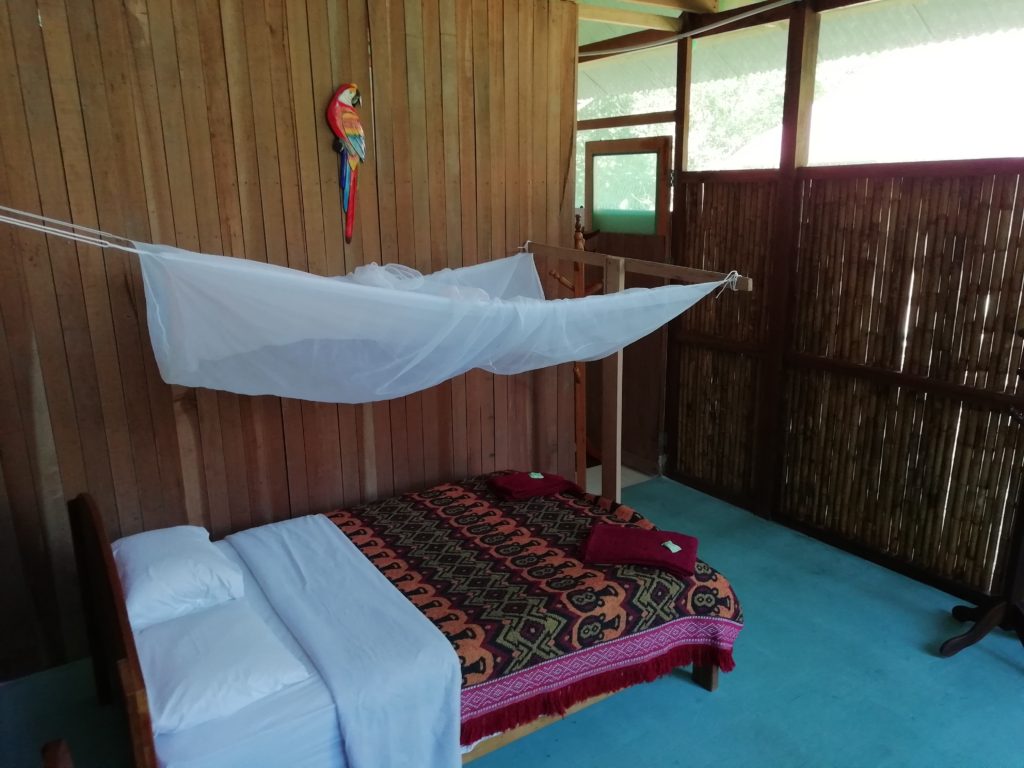

What is the food like when traveling?
Peruvian cuisine is very varied and delicious, there is a good cook for every excursion. As a local tourism company, we actually work with local farmers from the Andes and the Amazon that produce organic products that are used in the different typical cuisines or
novo-amazónicas.
Peru today is internationally recognized as one of the main gastronomic destinations in the world. However, we are flexible in this important aspect, if any visitor requires a particular diet, our cooks are prepared and suitable for these requirements, provided that it is requested in advance. Vegetarians, vegans and others.
WHAT IS A TOURIST TICKET?
The BTC (Boleto Turístico del Cusco) is a document that grants the right of temporary admission (valid for 10 days) to areas, archaeological monuments, museums and historical sites that are part of the cultural heritage of the Nation, administered by the Ministry of Culture and that are part of the tourist circuits or corridors that are located within the territorial jurisdiction of the department of Cusco, which are visited for tourism purposes.
With the BTC you can visit: SAQSAYHUAMAN, QENQO, PUKA PUKARA, TAMBOMACHAY, PISAQ, OLLANTAYTAMBO, MORAY, CHINCHERO, TIPON, PIKILLAQTA, POPULAR ART MUSEUM, QORICANCHA SITE MUSEUM, REGIONAL HISTORICAL MUSEUM, CONTEMPORARY ART MUSEUM, MONUMENT OF THE INCA PACHACUTEC, and the QOSQO CENTER OF NATIVE ART.
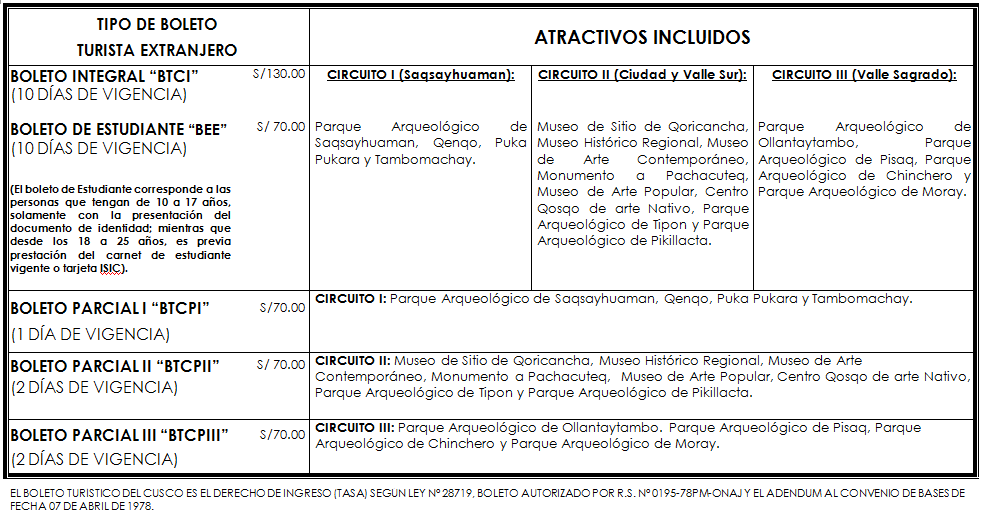
COST:
There are two types of tickets: domestic and foreign; there are also the Integral Ticket, Student Tourist Ticket and Partial Ticket, which in turn are divided into three groups:
- The entrance ticket to the CATHEDRAL of the Catholic Church is privately administered and costs S/. 25 Soles.
- The TEMPLE OF QORIKANCHA is located in the middle of the city of Cusco the entrance ticket is S/ 15.
- MARAS (the salt mines) is an Andean Quechua community and its center of tourist attraction is the salt mines, the entrance ticket is 15 soles.
- MACHU PICCHU is an Inca citadel and the entrance ticket costs s/ 152.00 Soles, Adult and s/ 77.00 Soles Student with official International ID and is valid for one day.
- The entrance ticket to Machu Picchu + HUAYNAPICCHU mountain is of s/ 70.00 Soles, a single price and valid for one day.
Why travel with ECOMANU..?
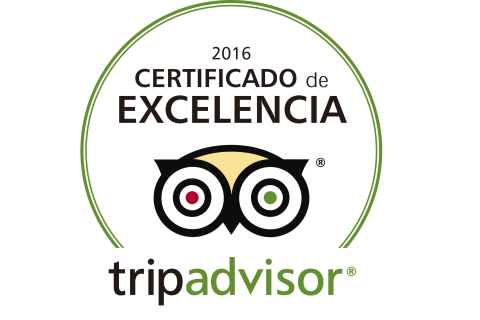
Ecoturismo
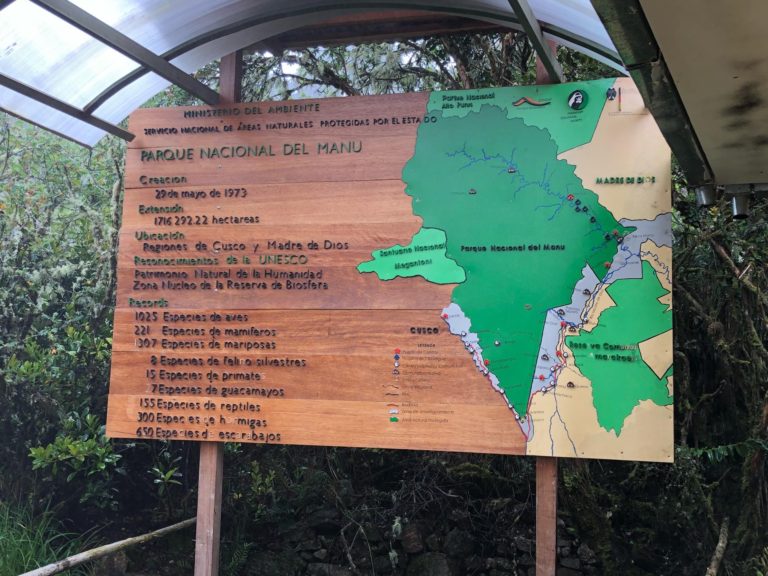
Videos
